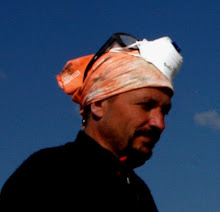ART OF SCULPTURE
Sıtkı M. ERİNÇ
As in all branches of the art in the context of a term, perhaps the first of the basic criteria in the art of sculpture in terms of evaluation is ‘universal dimension’. Here universality contains two meanings. The first is the universality in terms of the aesthetic concern it creates and the second is the universality in terms of the message it delivers. In other words, it may be said, the works that create an aesthetic concern in their receptors and deliver a message to them irrespective of the time and place are universal works of art, namely artistic works.
The quality of being universal in a sculpture is the result of two sources. The first is its artist’s perception of the world and vision of the future, and the other is the cultural background and identity of its receptors, namely those who look at a sculpture and watch it with an understanding eye. These two sources may not usually be parallel to each other in the beginning, indeed they must not be. This is because the originality and singleness of the work of art means that it creates a new supply and the receptors are usually not ready for such a novelty. In the course of time, however, these two subjects of the art coincide at a point, and they even conicide with each other to such an extent that they will never be disintegrated. It is only at this point that the work of art finds its way to being universal.
As sculpture is more troublesome and risky than the other works of art, the monumental ones in particular, it can only be produced in small numbers and at certain places; therefore, it takes societies long time to adopt and assess them.
The art of sculpture, in particular, has not been able to gain a modern and contemporary state both in socio-cultural terms and in terms of values, and indeed it has not been allowed to do so. It is for this very reason that our sculptures are very few and inadequate and so are our artists who work and struggle with sculptures ceaselessly, patiently and indefagitably.
I, on my part, evaluate the sculptors from a different perspective for these reasons and pay unmatched respect to them.
One of the young and diligent sculptors in our country is, to my way of thinking, Mustafa Bulat. As far as I know and remember, he started his academic career at the Faculty of Fine Arts in Atatürk University in Erzurum after he had graduated from Hacettepe University. And he has been there since then. I can say that I have always followed him and his works. I saw both his name and his human-size works in the International Sculpture Symposiums and International Workshops, which was a matter of pride and pleasure for me. His close involvement in the art of sculpture and the outer world in the face of his environment is worth every sort of praise, especially when his interest is proved by his works.
Taking a panoramic look at his works of the last 7-to-8 years, we can realize that human factor is a leading one in his works. There is a man who can keep himself up in the face of everything against him in some of his works and another one in others who does not know where he is and who has lost his tie with the life itself and has got lost in it... But a man...
In his sculptures made with different and mixed techniques, Bulat has treated some subjects a few times from different perspectives. The theme of ‘somewhere once upon a time’, for example, has been carved in different sizes both as marble and plaster. For my part, man seems to be full of the memories of the past in one of them while unconscious of the time and place in which he is. Hs ability to gain the abstract humans these impressions is caused by an original power that Bulat places in his sculptures, his humans.
His work entitled ‘Dream of Childhood’ is a gorgeous one of the dimensions 78x35x30 cm, which is made from mixed materials. What dream, or dreaming is made to mean is understood as soon as one looks at the sculpture.
The metaphoric narrative of the gloomy title ‘Window, Balance’ of dimensions 40x16x10 is strongly reflected through the colour of material and its loopholed pattern. His bronze casting sculptures, mini sculputres, are able to have themselves accepted in all their emotional narratives in spite of the massive size of their bases.
Viewing Bulat’s works collectively, both the developmental line and narrative facility can be easily followed, a quality which makes it possible to determine the artist’s place in the future more easily.
Self-assured of his accomplishments in the future with a view to his bright past, I would again like to congratulate our artist on his ardent attempts and
15 Eylül 2008 Pazartesi
Kaydol:
Kayıt Yorumları (Atom)

Hiç yorum yok:
Yorum Gönder